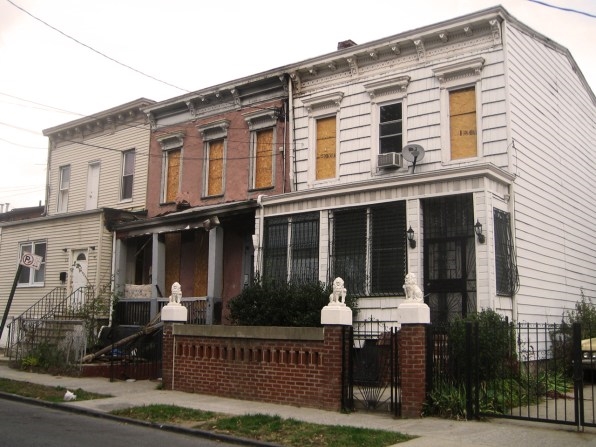Across the small cities and towns across upstate New York, vacant and blighted buildings sit amid rows of residential homes and interrupt commercial corridors. Albany counts over 1,000 vacant properties, and Newburgh, a small city of 30,000 people on the Hudson River, has over 750.
In regions struggling with economic stagnation–in many cases, like these towns, in the aftermath of an industrial bust–widespread vacancy only compounds the issues they’re confronting. Abandoned space gives the impression of disinvestment, which makes it difficult for cities to actually attract the investment they need to revive. And blighted homes create barriers to welcoming new residents, which would also help jump-start their economic engines.
Addressing blight could be an avenue for cities like Albany and Newburgh to jump start their revival from the inside out. Recognizing this, New York’s former attorney general Eric Schneiderman (who vacated the office earlier this year amid charges of sexual misconduct) introduced a program in 2016 that would enable them to do so. Called Neighbors for Neighborhoods, the $4 million program, financed by a settlement paid by banks associated with the foreclosure crisis of 2008, helps people acquire vacant properties to rehabilitate and rent out as affordable units.

In 2011, New York Governor Andrew Cuomo authorized the creation of 25 local community land banks across the state. These land banks are nonprofits that acquire vacant, abandoned, foreclosed, or tax-delinquent properties, ideally to productively repurpose them. But land banks, like the one in Newburgh, often struggle with accessing funds to carry out rehabilitation of the properties under their control. Neighbors for Neighborhoods, which is administered by Enterprise Community Partners helps locals overcome some of those financial barriers. In Newburgh, according to Next City, the program has helped finance three redevelopment projects, and Rochester expects that five properties will be revived under this current round of funding.
It may not seem like a lot, especially considering the widespread vacancy crisis in towns like those in upstate New York, but the program operates at an intentionally small scale to encourage considerate, sustainable development. Projects financed under Neighbors to Neighborhoods are intended to create rental properties of no more than four units, which have to be leased out at rates that are affordable to people making at or below 80% of the area median income. The person who decides to buy up and lease the property has to live near it, and can’t own more than two other rental properties already.
These regulations are in place to ensure that the program functions at an equitable, hyperlocal level. The goal of the program was to develop some affordable rental housing in struggling neighborhoods and build local wealth at the same time, Elizabeth Zeldin, senior program director at Enterprise Community Partners, told Next City.
People who buy and rehabilitate the properties with program funding will be able to bring in some extra income, but because the units have to be rented out at affordable rates, they won’t make a killing. And the restriction on the number of properties an owner can control ensure that a monopoly on ownership can’t take hold in a city.
Neighbors to Neighborhoods also acts as a corollary to other state-funded affordable housing initiatives currently rolling out across New York. Last year, for instance, the state announced a $3.5 million grant–also funded through settlements reached by Schneiderman and administered through Enterprise Community Partners–to finance the development of community land trusts in four regions. CLTs, as they’re known, are a proven means of facilitating affordable homeownership. As nonprofits, they buy up publicly available land, and lease out whatever housing they build or rehabilitate on the property at rates collectively determined to be affordable for the community. When someone who buys a property on a CLT decides to sell it, they have to sell not at the market rate, but at a rate that remains affordable to the next tenant–the idea being to classify housing as a resource, not a means to generate excess wealth.
Land banks often sell their properties to CLTs, Zeldin said in Next City, because “homeownership has really been the traditional stabilization strategy in communities, particularly the low-density ones.” With Neighbors to Neighborhoods, Enterprise Community Partners and the state wanted to demonstrate that equitable affordable rental projects could also act as a stabilizing force. A good and fair housing market presents residents with choices, and cities trying to address blight should be looking at ways to develop pathways for both affordable homeownership and rental options–and Neighbors to Neighborhoods could be a model for tackling the latter.
(31)